Abstract
A number of yeast strains, isolated from sugar cane mills and identified as strains of Kluyveromyces marxianus var. marxianus, were examined for their ability to ferment glucose and cane syrup to ethanol at high temperatures. Several strains were capable of rapid fermentation at temperatures up to 47°C. At 43°C, >6% (wt/vol) ethanol was produced after 12 to 14 h of fermentation, concurrent with retention of high cell viability (>80%). Although the type strain (CBS 712) of K. marxianus var. marxianus produced up to 6% (wt/vol) ethanol at 43°C, cell viability was low, 30 to 50%, and the fermentation time was 24 to 30 h. On the basis of currently available strains, we suggest that it may be possible by genetic engineering to construct yeasts capable of fermenting carbohydrates at temperatures close to 50°C to produce 10 to 15% (wt/vol) ethanol in 12 to 18 h with retention of cell viability.
Full text
PDF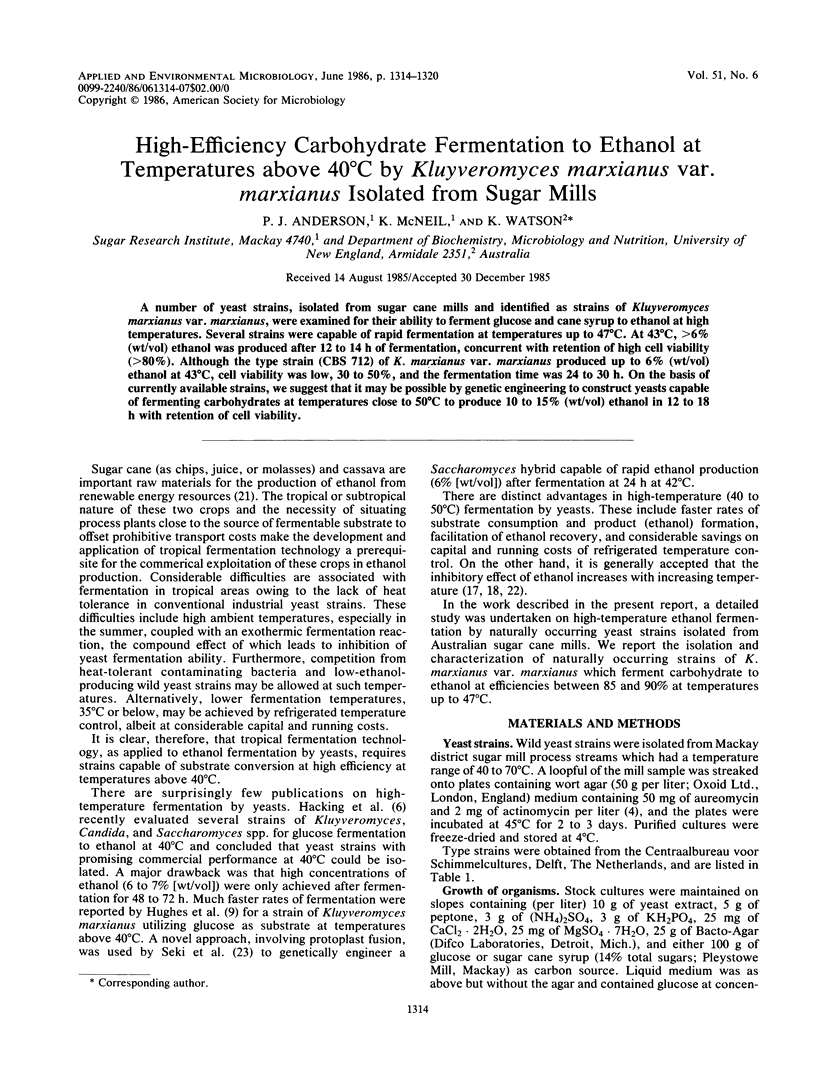
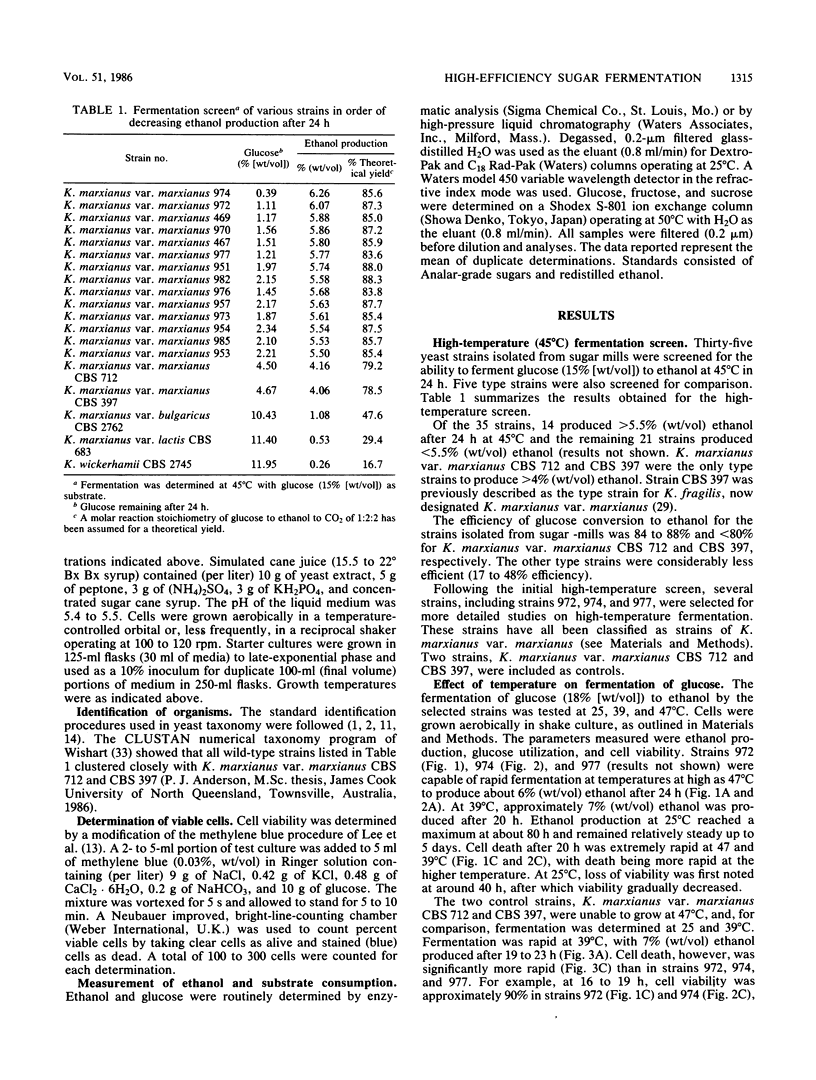
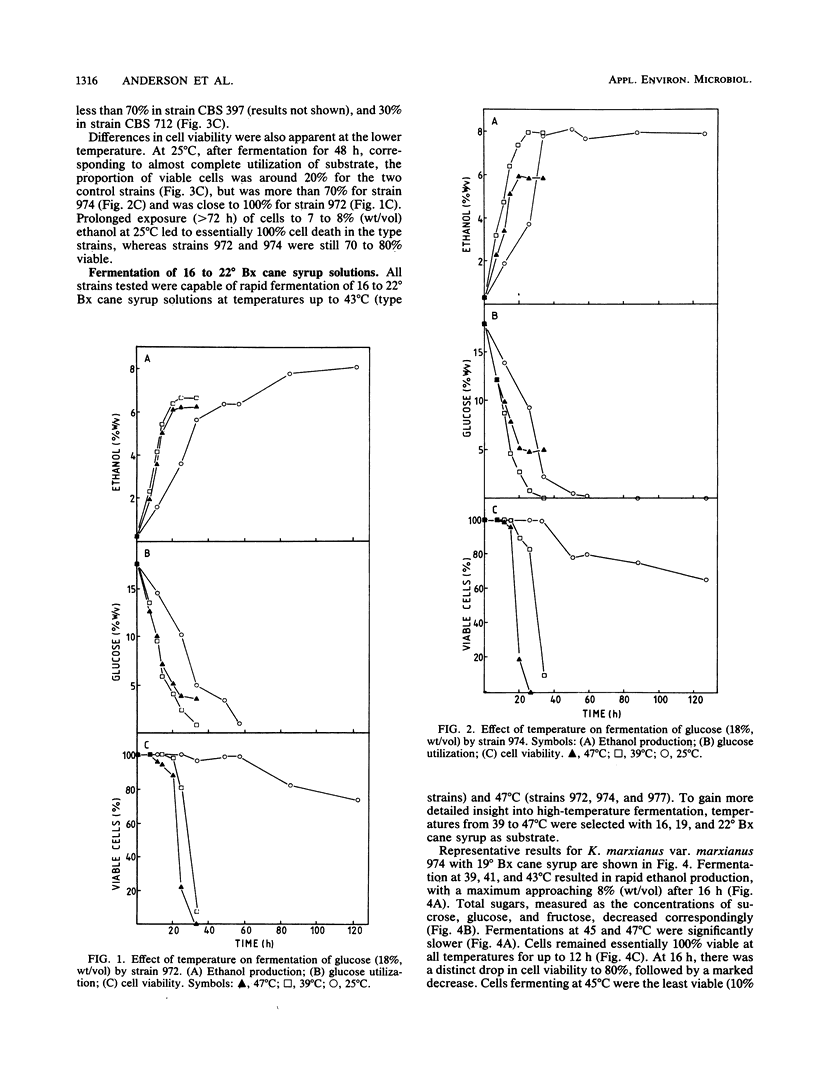

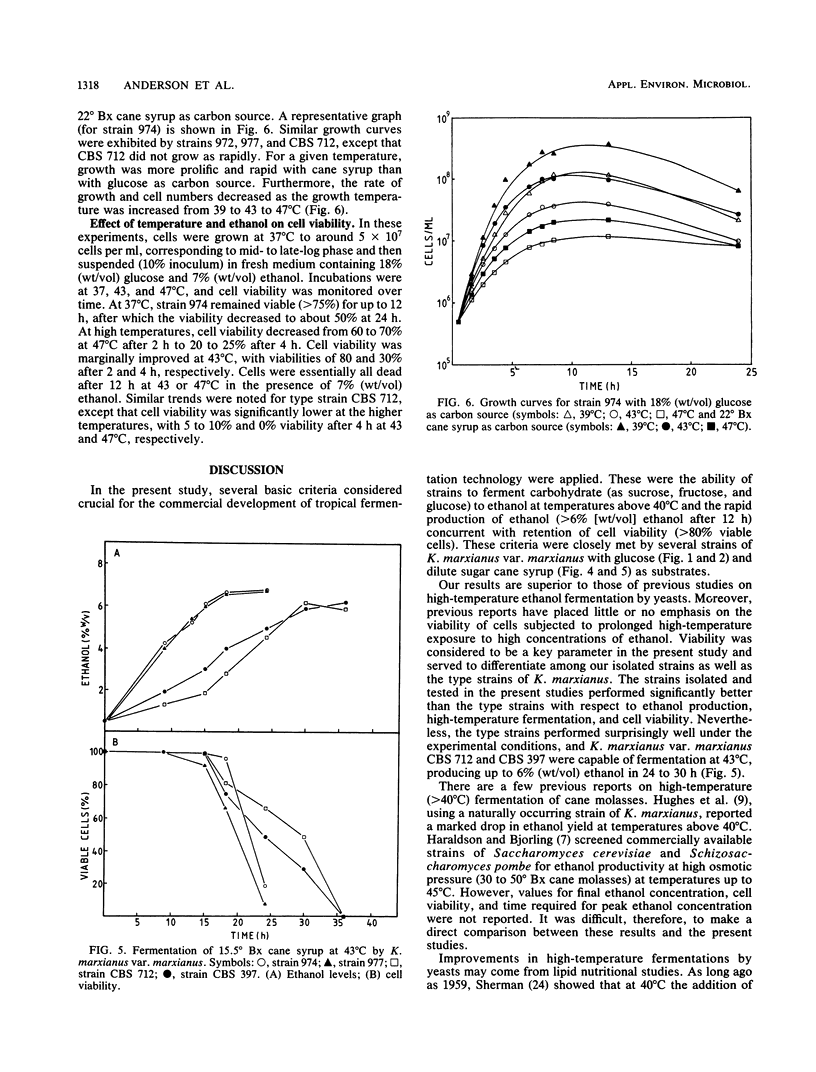
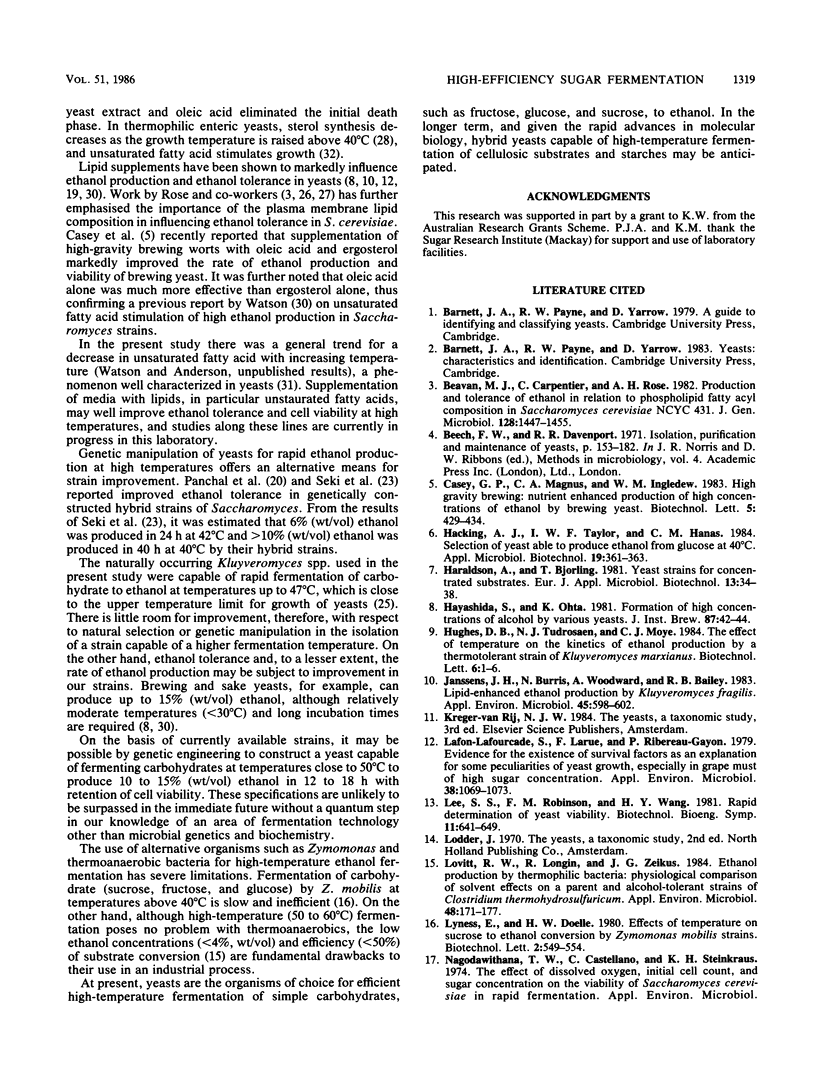
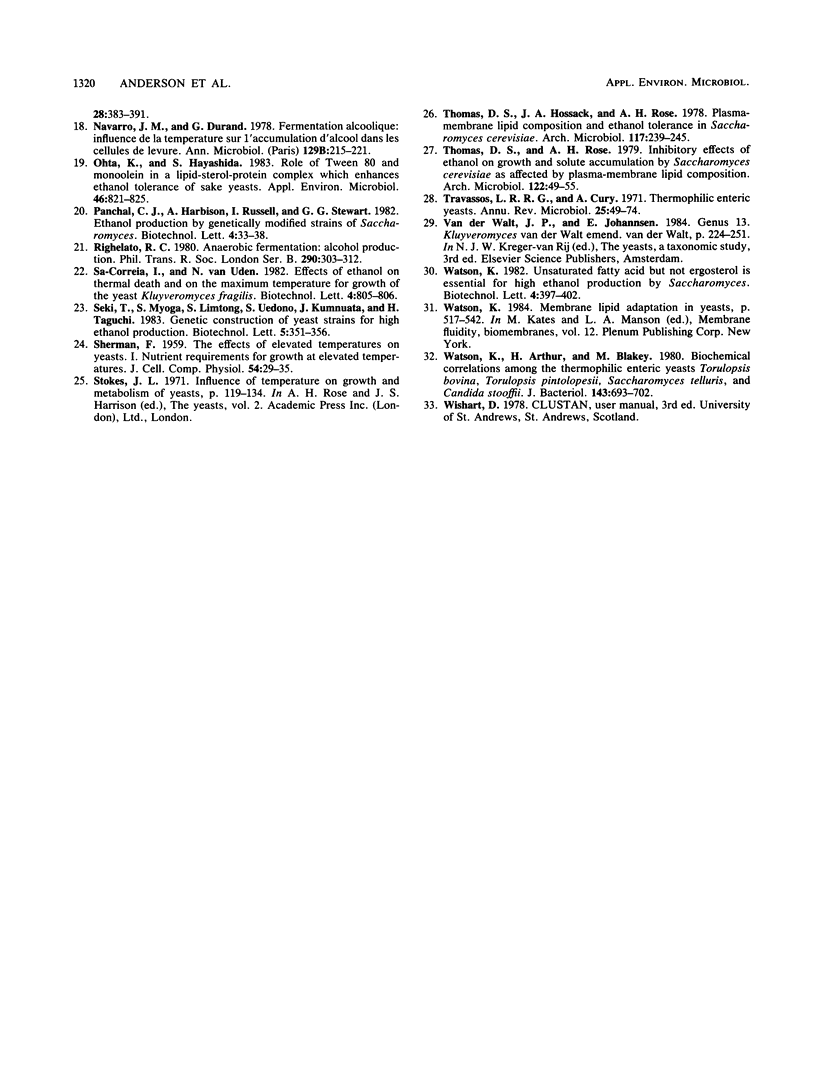
Selected References
These references are in PubMed. This may not be the complete list of references from this article.
- Janssens J. H., Burris N., Woodward A., Bailey R. B. Lipid-Enhanced Ethanol Production by Kluyveromyces fragilis. Appl Environ Microbiol. 1983 Feb;45(2):598–602. doi: 10.1128/aem.45.2.598-602.1983. [DOI] [PMC free article] [PubMed] [Google Scholar]
- Lafon-Lafourcade S., Larue F., Ribereau-Gayon P. Evidence for the existence of "survival factors" as an explanation for some peculiarities of yeast growth, especially in grape must of high sugar concentration. Appl Environ Microbiol. 1979 Dec;38(6):1069–1073. doi: 10.1128/aem.38.6.1069-1073.1979. [DOI] [PMC free article] [PubMed] [Google Scholar]
- Lovitt R. W., Longin R., Zeikus J. G. Ethanol Production by Thermophilic Bacteria: Physiological Comparison of Solvent Effects on Parent and Alcohol-Tolerant Strains of Clostridium thermohydrosulfuricum. Appl Environ Microbiol. 1984 Jul;48(1):171–177. doi: 10.1128/aem.48.1.171-177.1984. [DOI] [PMC free article] [PubMed] [Google Scholar]
- Navarro J. M., Durand G. Fermentation alcoolique: influence de la température sur l'accumulation d'alcool dans les cellules de levure. Ann Microbiol (Paris) 1978 Aug-Sep;129B(2):215–224. [PubMed] [Google Scholar]
- Ohta K., Hayashida S. Role of tween 80 and monoolein in a lipid-sterol-protein complex which enhances ethanol tolerance of sake yeasts. Appl Environ Microbiol. 1983 Oct;46(4):821–825. doi: 10.1128/aem.46.4.821-825.1983. [DOI] [PMC free article] [PubMed] [Google Scholar]
- SHERMAN F. The effects of elevated temperatures on yeast. I. Nutrient requirements for growth at elevated temperatures. J Cell Comp Physiol. 1959 Aug;54:29–35. doi: 10.1002/jcp.1030540105. [DOI] [PubMed] [Google Scholar]
- Thomas D. S., Hossack J. A., Rose A. H. Plasma-membrane lipid composition and ethanol tolerance in Saccharomyces cerevisiae. Arch Microbiol. 1978 Jun 26;117(3):239–245. doi: 10.1007/BF00738541. [DOI] [PubMed] [Google Scholar]
- Thomas D. S., Rose A. H. Inhibitory effect of ethanol on growth and solute accumulation by Saccharomyces cerevisiae as affected by plasma-membrane lipid composition. Arch Microbiol. 1979 Jul;122(1):49–55. doi: 10.1007/BF00408045. [DOI] [PubMed] [Google Scholar]
- Travassos L. R., Cury R. Thermophilic enteric yeasts. Annu Rev Microbiol. 1971;25:49–74. doi: 10.1146/annurev.mi.25.100171.000405. [DOI] [PubMed] [Google Scholar]
- Watson K., Arthur H., Blakey M. Biochemical correlations among the thermophilic enteric yeasts Torulopsis bovina, Torulopsis pintolopesii, Saccharomyces telluris, and Candida slooffii. J Bacteriol. 1980 Aug;143(2):693–702. doi: 10.1128/jb.143.2.693-702.1980. [DOI] [PMC free article] [PubMed] [Google Scholar]


